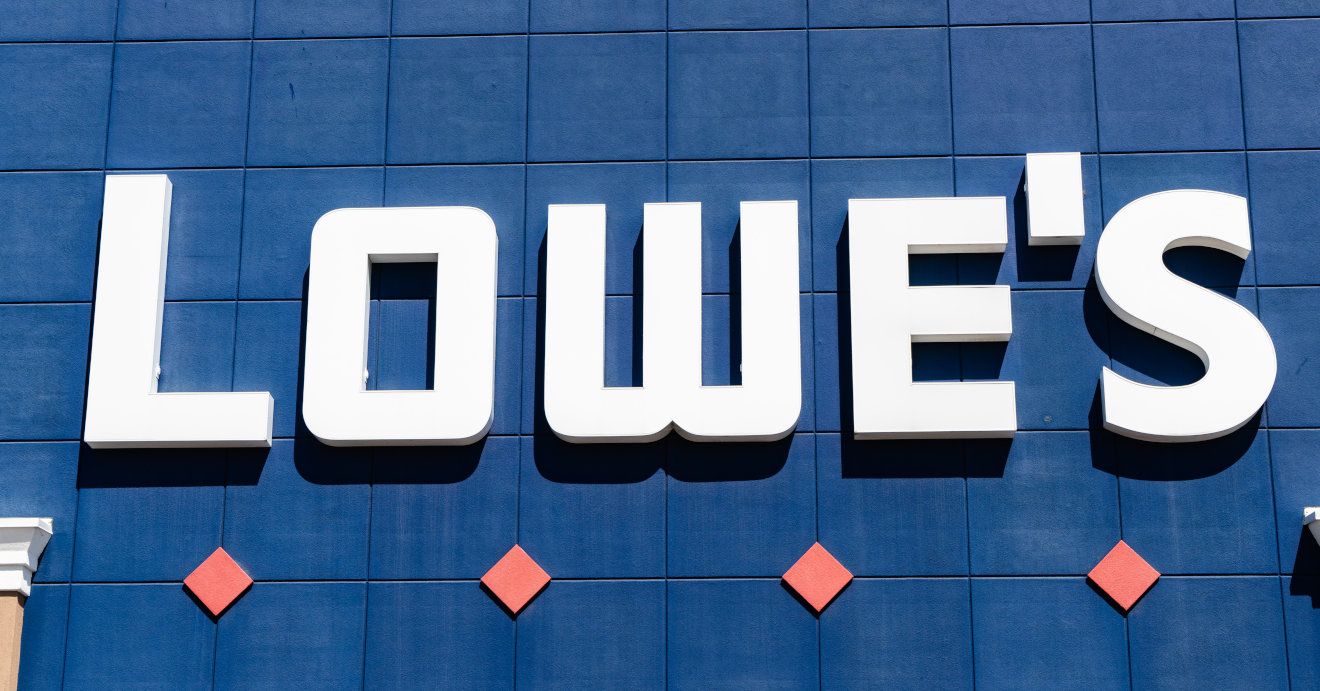In a step forward for public health, Lowe’s has banned the sale of fabric protectors that contain toxic PFAS chemicals in its stores.
PFAS chemicals (per- and polyfluoroalkyl substances) are a class of thousands of man-made chemicals often used to confer increased resistance to oil, water, and dirt. These chemicals have contaminated the air, soil, water, plants, and wildlife, and endanger our health. PFAS are linked to a variety of health problems, among them cancer and developmental issues, and can be harmful at extremely low doses. They can impact the immune system and these health impacts and others could make us more vulnerable to COVID-19.
In an update to its safer chemicals policy Lowe’s added a commitment that “all fabric protection sprays are free of PFAS chemicals.” The commitment follows a company pledge in 2019 to stop the sale of all indoor residential carpets and rugs treated with these toxic chemicals. Lowe’s latest action came in advance of the Mind the Store campaign’s fifth annual retailer report card.
Lowe’s shouldn’t stop there. The company should remove PFAS from all remaining product categories where these forever chemicals are still used, and ensure any replacements are safer. Other retailers like The Home Depot should also join Lowe’s in banning PFAS in these and other products.
Lowe’s new commitment comes after 3M – the manufacturer of Scotchgard-branded aerosol fabric protector cans – stopped selling Scotchgard branded aerosol cans with PFAS as of June 2020. This is good news. It is unfortunate, however in the meantime, that 3M has reformulated its Scotchgard consumer products while at the same time the company continues to argue that PFAS chemicals are safe. In addition, the company has announced no such reformulation of its commercial fabric protectors.
Dangers of PFAS fabric protection sprays
PFAS in fabric sprays pose a significant threat to public health, especially to small children. In a 2019 report, the State of California wrote:
“Carpets, rugs, upholstery, clothing, shoes, and other consumer products to which treatments containing PFASs have been applied become major sources of exposure for infants and children via direct contact and incidental indoor dust ingestion. Young children have been shown to ingest more soil and dust than adults, due to greater hand-to-mouth transfer; this can result in higher exposure to PFASs found in these contaminated environmental media.” (emphasis added)
Additionally, when the product is applied as an aerosol spray, it can be inhaled and cause respiratory distress. There are multiple documented cases of users of PFAS-containing textile sprays being hospitalized with diagnoses of lung damage.
Product manufacturers and retailers must ensure substitutes are safe
The removal of PFAS from products and store shelves is essential in the battle to protect public health from these toxic chemicals. At the same time, however, manufacturers must ensure that PFAS chemicals are not replaced with other hazardous substances, commonly referred to as “regrettable substitutes.”
3M, for instance, has not fully disclosed the chemicals in some of its reformulated Scotchgard products. In addition, each of the safety data sheets that we reviewed for the reformulated products showed at least one ingredient that has been linked to potential health hazards.[i]
As commitments to remove PFAS from products on store shelves gather steam, manufacturers should ensure that replacements are safer. Safer alternatives to fabric protectors that contain PFAS already exist – for example, products currently on the market that use beeswax and plant-based waxes and oils to confer water resistance. To ensure that regulators and retailers can independently evaluate product reformulations and so the public can make a more informed decision on safety, manufacturers should disclose all ingredients used in all fabric protectors they make.
State and Federal Regulators Must Step In
Failing voluntary disclosure by manufacturers, state and federal regulators should step in and require companies reveal the ingredients used in all fabric protection products. Nothing short of full disclosure will adequately protect the public from PFAS being replaced with other hazardous chemicals.
California and Washington are moving in this direction. In November 2019, the State of California determined that PFAS-containing textile treatments used by consumers to make fabrics waterproof or dirt-proof pose a danger to public health and is working to issue final regulations that would restrict their use. As part of this effort, the state is mandated to recommend safer alternatives to the public and manufacturers.
Washington State has followed suit, naming aftermarket stain and water resistance treatments together with carpets and leather and textile furnishings as priority products for PFAS removal under the Safer Products for Washington law. Under this law, Washington State can require disclosure of ingredients in alternatives so that they can be evaluated for safety.
It’s time we turn off the tap on these toxic forever chemicals and ensure substitutes are truly safe.
[1] Safety Data Sheets: https://multimedia.3m.com/mws/mediawebserver?mwsId=SSSSSuUn_zu8l00xNx_SOxtvov70k17zHvu9lxtD7SSSSSS– ; https://multimedia.3m.com/mws/mediawebserver?mwsId=SSSSSuUn_zu8l00xNx_v4xmZPv70k17zHvu9lxtD7SSSSSS– ; https://multimedia.3m.com/mws/mediawebserver?mwsId=SSSSSuUn_zu8l00xNx_vMY_Uov70k17zHvu9lxtD7SSSSSS–





